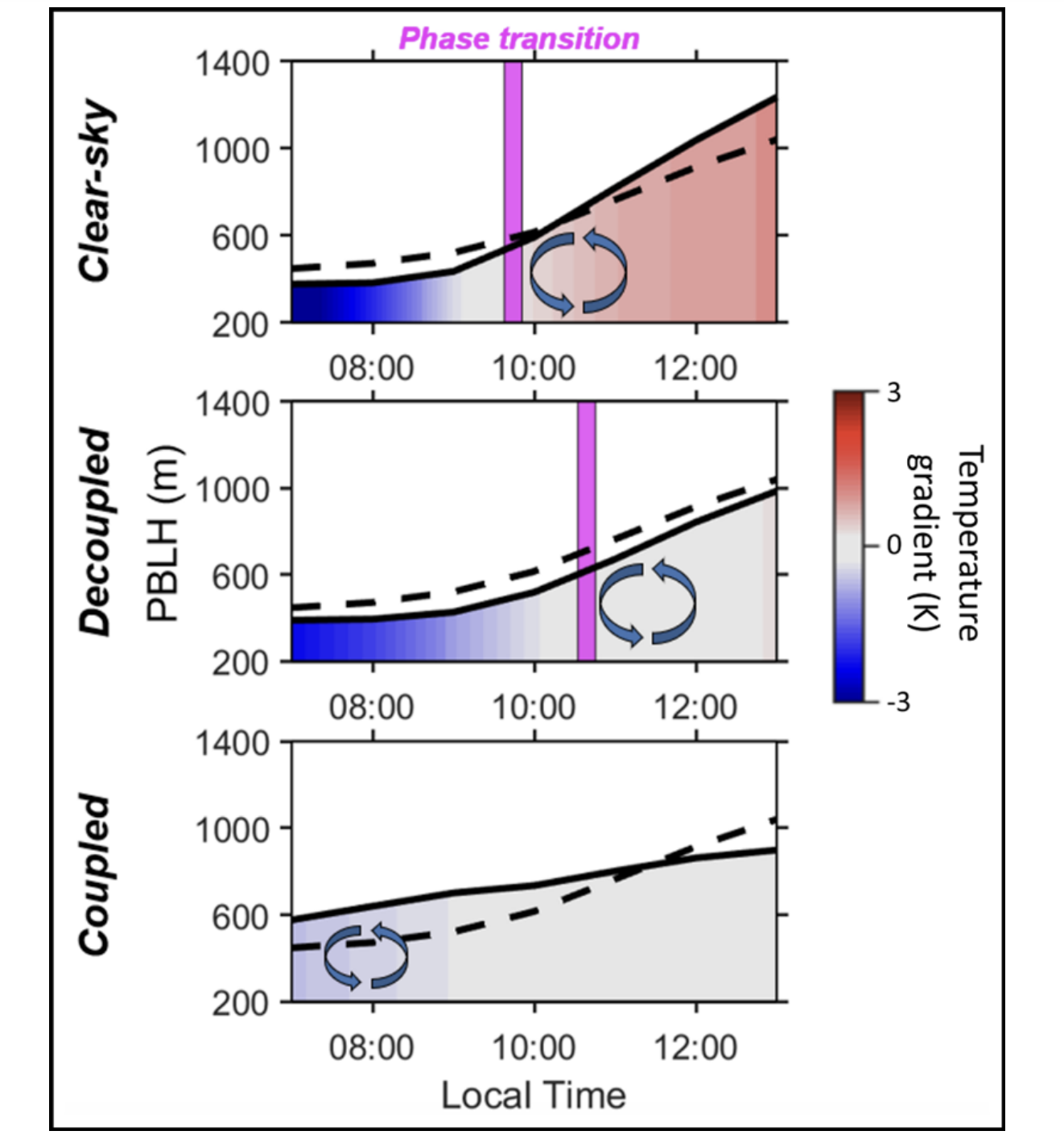Process-level Mechanisms of Cloud-PBL-Surface Coupling
My research has delved deeply into the dynamics of cloud and land surface coupling, focusing on the intertwined interactions between the planetary boundary layer (PBL), cloud formations, and land surface processes. The study reveals that the occurrence of coupled clouds demonstrates a strong diurnal sensitivity to both surface forcing, such as that from land heating and cooling, and changes within the PBL, including shifts in stability, humidity, and turbulence. In contrast, decoupled clouds exhibit more tenuous links to these forcings, often either emerging as residuals from land-coupled convective systems or being influenced predominantly by horizontal advections.
The investigation into cloud-surface coupling has also extended to examining the drivers of turbulence within the PBL. Field observations suggest that coupled stratiform clouds facilitate the morning transition of the PBL to instability, promoting convection and growth (see Figure). This occurs through a combination of cloud-top radiative cooling and surface heating, where both processes synergistically induce air movement and convection within the PBL (Su et al. 2023).
Our research also indicates that local convection and large-scale synoptic patterns jointly modulate coupling between clouds and the land surface. For example, shallow coupled cumulus clouds are largely shaped by local convection, whereas the formation of stratiform clouds (such as stratus and stratocumulus), which may be in either coupled or decoupled states, is often initiated by large-scale meteorological patterns. These stratiform clouds frequently develop in the trailing regions of thunderstorm systems, particularly in association with weather fronts or mesoscale convective systems.
By elucidating the roles of coupled and decoupled clouds in PBL dynamics and identifying the combined effects of cloud radiative cooling and surface heating on turbulence, this research provides a clearer picture of the complex relationships between clouds, the PBL, and land surfaces.

Related Papers:
- Su, T., and Li, Z., 2024: "Decoding the dialogue between clouds and land." Eos. [Link]
- Su, T., Li, Z., Zheng, Y., 2023. "Cloud-surface coupling alters the morning transition from stable to unstable boundary layer." Geophys. Res. Lett. [Link] (ASR Highlight)
- Zheng, Y., H. Zhang, D. Rosenfeld, S.S. Lee, T. Su, and Z. Li., 2021, "Idealized large-eddy simulations of stratocumulus advecting over cold water. Part 1: Boundary layer decoupling," Journal of the Atmospheric Sciences. [Link]